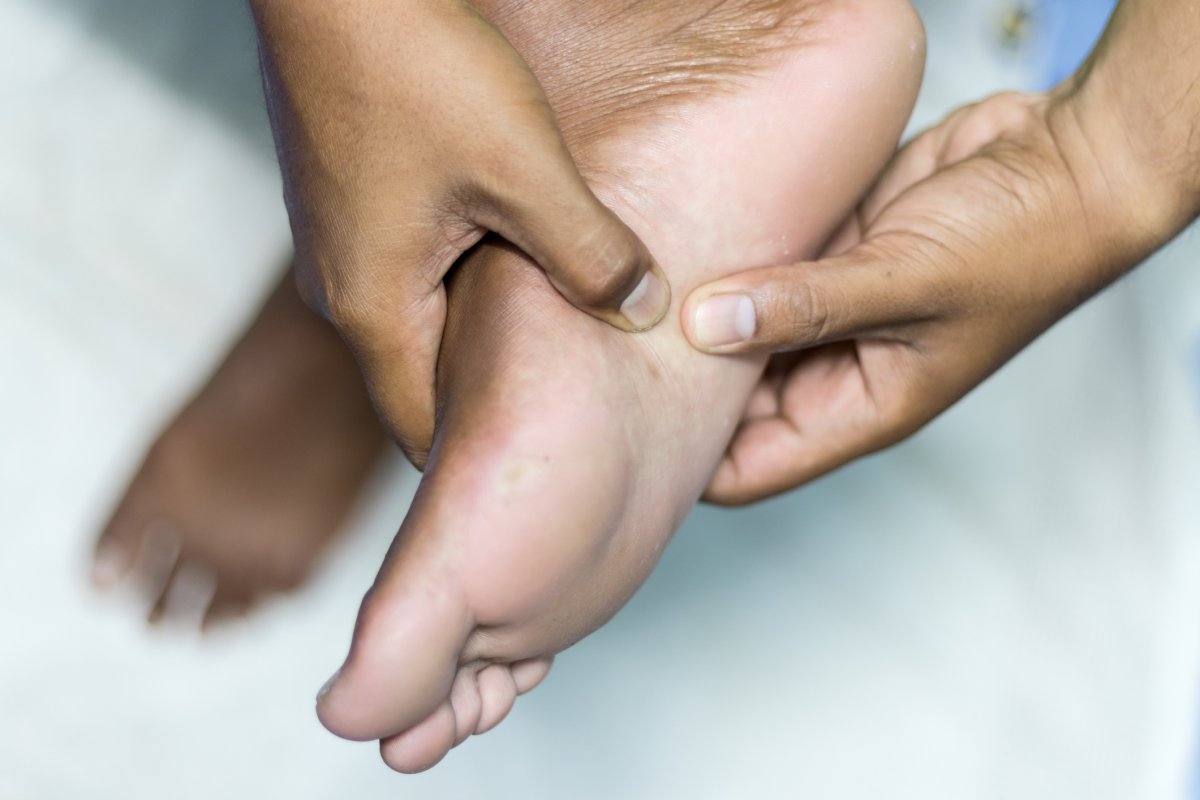It’s a foot condition that starts off with heel pain, and experts say it’s quite common.

Jamie Mandlsohn, a chiropodist at the Toronto Foot Clinic, described the condition in question, plantar fasciitis, as the inflammation of the planter fascia, a band of tissue that stretches from the heel to the middle foot bone.
“Imagine your foot as a shock-absorber,” he told Global News. Generally most people come in with heel pain, he adds, and specialists have to identify if it’s plantar fasciitis or something else like heel spurs, a bone-like growth in the heel.
Unlike other muscle tissue in our bodies, the planter fascia is not very elastic and is limited to how much it can stretch. “When there is too much traction, it can result in inflammation and pain.”
READ MORE: Clothing and accessories that can be harmful to your health
How do you get it?
At least 60 per cent of people who come to see Mandlsohn have plantar fasciitis and it often stems from playing sports, running, walking or even standing for long periods of time.
“It can also be excessive weight gain and is very common during pregnancy,” he said. Age is also a factor as our muscles become weaker, but one of the biggest issues is the lack of proper footwear.
“When we wear high heels or flat shoes for example, it is giving our foot a constant stretch,” he explained. “Also walking barefoot on tile or concrete.”
How to treat it
If you do start feeling pain, see a specialist right away; often people wait or just use insoles for relief.
An x-ray can diagnose plantar fasciitis, and treatment is often the same as it is for other similar conditions, like heel spurs.
READ MORE: How to deal with toe fungus (and other common summer foot problems)
Specialists will start by teaching you how to properly stretch the foot, including the calf muscles. Next, an ultrasound may be recommended.
“This stimulates blood flow and if you’ve had this pain for three or more months, it can become chronic. There is also shockwave therapy, cortisone injections and anti-inflammatory drugs you can buy over-the-counter.”
“Change your footwear,” she stressed. “Get orthotic shoes that support the heel.”
Recovery time can range from three to six months, he adds, but often after two years people return with the same pain.
“It’s like a form of a diet, you have to maintain it. Most people think when they are fixed, they can go back to normal, but you always have to maintain the treatment.”
Prevention
And if you’ve been lucky enough not to deal with plantar fasciitis, it’s important to prevent it from happening in the first place.
Mandlsohn said the solution is simple: it comes down to footwear.
READ MORE: Ontario couple contract parasitic foot infection after Caribbean vacation
“Stay away from some shoes that have memory foam, there is often no support in the foot and the foot rolls over,” he said, adding constantly wearing high heels or flat shoes also can be damaging.
But the worst offender? Flip-flops. “When you’re wearing flip-flops it is flat as a board, there is no support.”




Comments